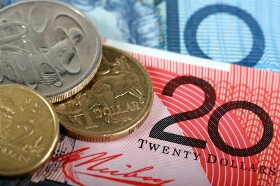The Australian dollar fell against its most-traded rivals today despite the better-than-expected domestic macroeconomic data. The Aussie, as well as other commodity currencies, continued to be dragged down by fears of the coronavirus that has started in China but is now spreading across the world.
The Australian Bureau of Statistics reported that import prices rose by 0.7% in the December quarter of 2019, whereas analysts had expected the same 0.4% rate of increase as in the previous three months. Year-on-year, the prices rose by 1.4%. Petroleum, petroleum products, and related materials were the biggest contributors to the gain, rising by 3.8%. Fertilizers (excluding crude) demonstrated the biggest decline, falling by 6.5%.
Export prices sank by 5.2% in the last quarter of the previous year, though the drop was somewhat smaller than 5.4% predicted by analysts. The prices rose by 1.3% in the previous quarter. Year-on-year, export prices dropped by 4.1%. Metalliferous ores and metal scrap demonstrated the biggest decline, tumbling by 9.1%. Meat and meat preparations managed to avoid losses, gaining by 6.9%.
Markets continued to be in a state of risk aversion due to fear of the spreading coronavirus. While it is still unclear what impact the disease will have on the global economy, most economists fear that it will be rather noticeable, especially in China. The Australian dollar, being linked to economic growth, reacted negatively to such a threat.
AUD/USD slumped from 0.6752 to 0.6724 as of 7:45 GMT today. EUR/AUD surged from 1.6298 to 1.6373. AUD/JPY tumbled from 73.58 to 73.18.
If you have any questions, comments, or opinions regarding the Australian Dollar, feel free to post them using the commentary form below.
Australian Macroeconomic Data Beats Expectations, Aussie Unimpressed
